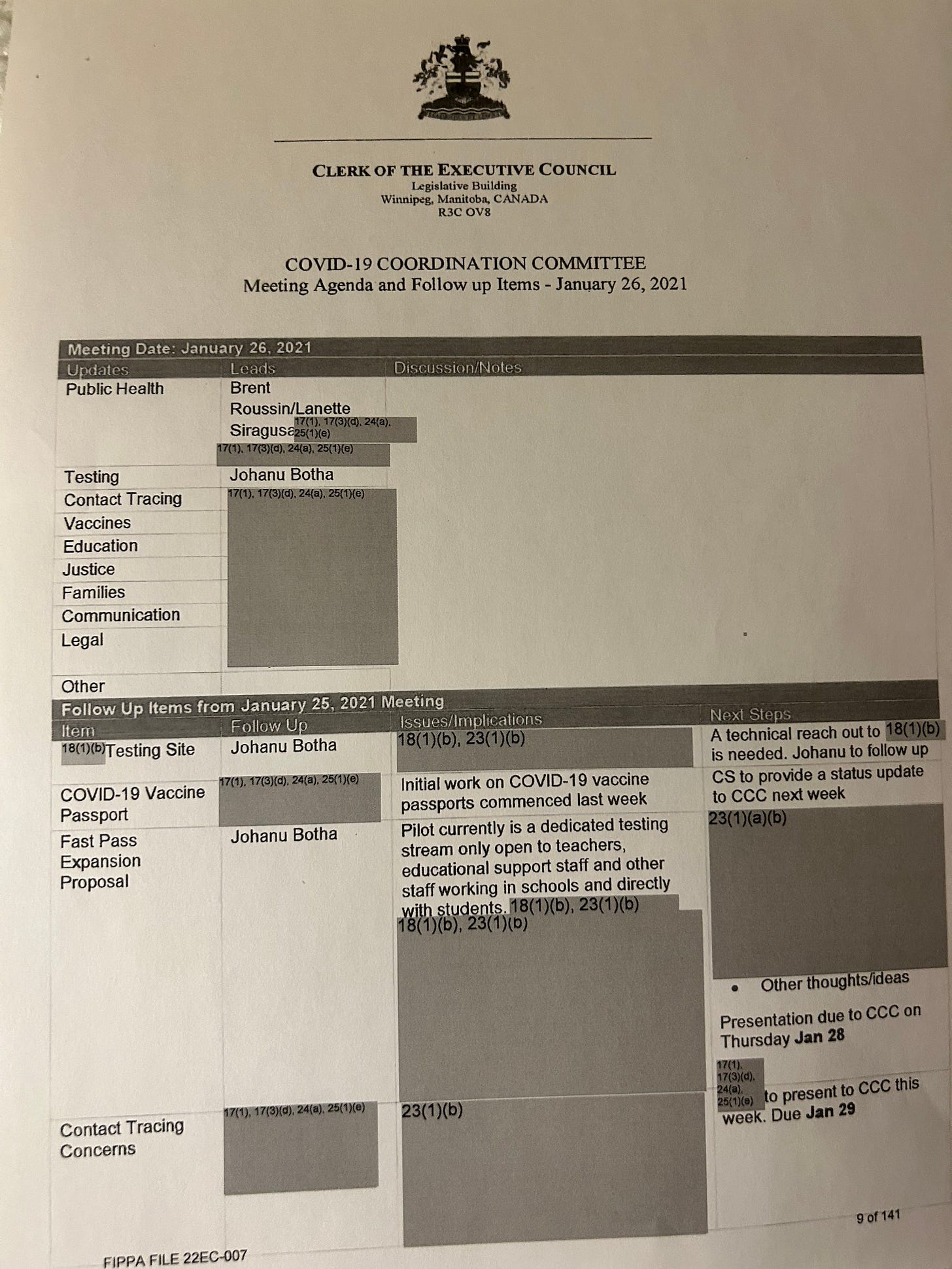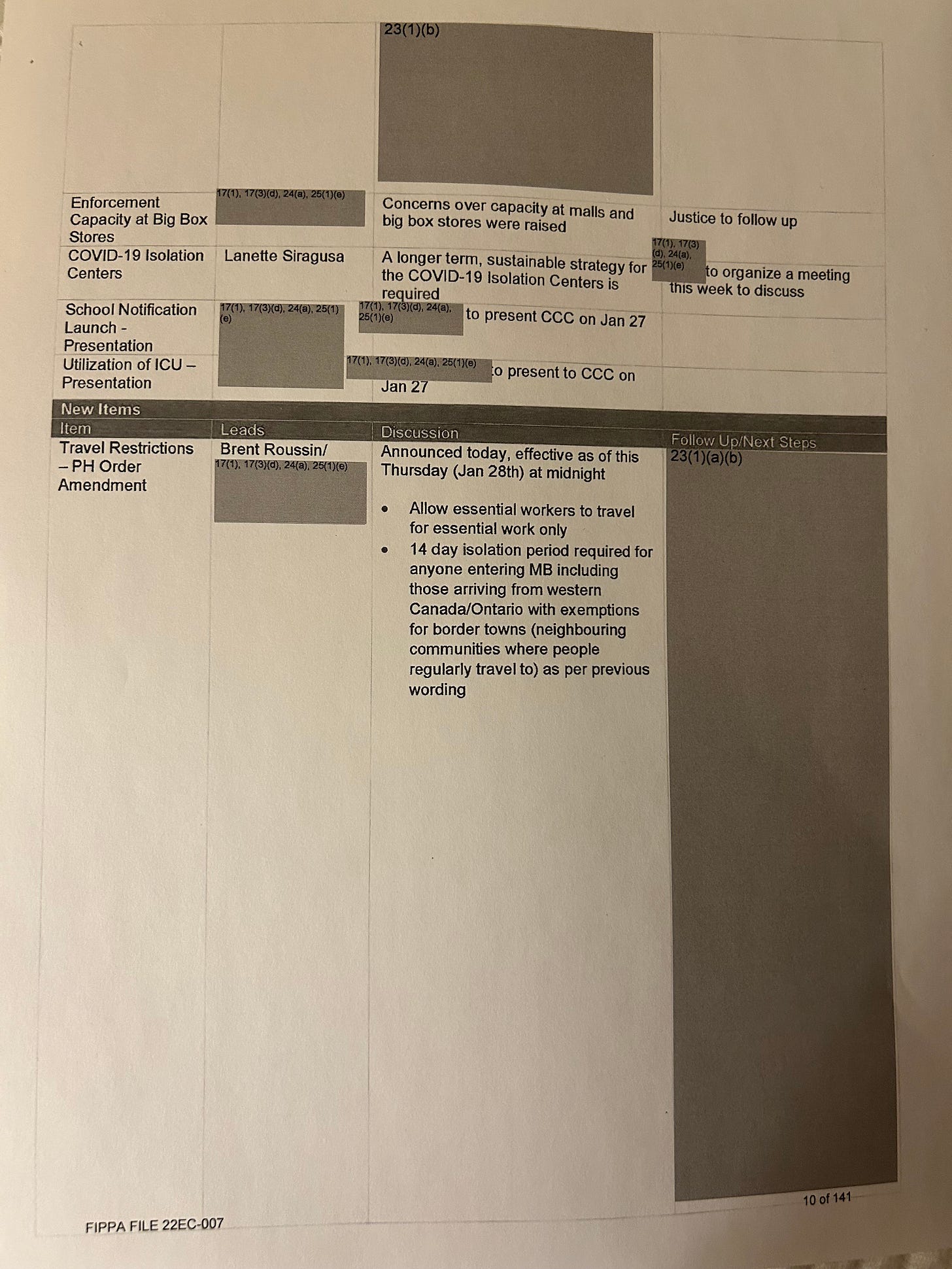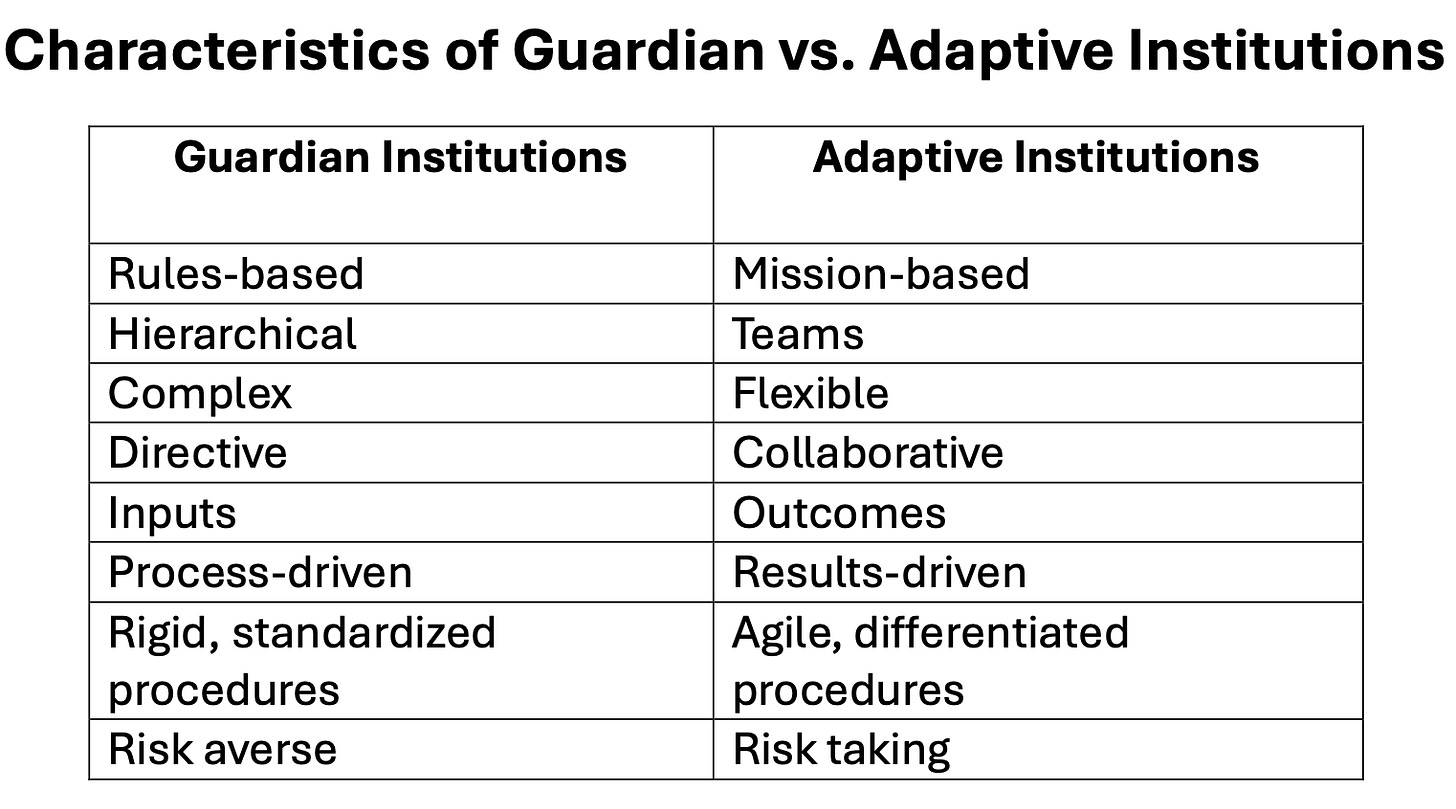“The standing operating procedures don’t work anymore” - Michael Sabia, PCO Clerk, Cabinet Secretary, and Head of the Public Service.
Prime Minister Mark Carney is in a hurry to do things. He needs the federal public service to hurry up with him. Can it?
On his first day in his new position, Privy Council Clerk Michael Sabia sent a message to all public servants about his expectations. Instead of trying to ‘boil the ocean’ with a typically platitudinous message ‘for all, about all’, Sabia boiled it down to three words: Focus, Simplify, and Accountability.1
This should not be controversial. But they may turn out to be. Because they convey the prospect of a significant culture change to the current operating ethos of the public service. Let me boil it down even further to what I think Sabia meant: Get the stuff that matters most done faster and better.
If this sounds radical, it shouldn’t. That’s the way Canada’s government(s) should operate. But it doesn’t. Not as a matter of course, anyway. That a new Clerk felt the need to set out both a Dx and Rx of the problem on ‘day one’ is a reminder of the governance failures and state capacity gaps that now plague the federal government. Gaps that are the key stumbling block to the new PM’s new agenda.
None of this guarantees things will now change. But if public servants were waiting for a change signal from the top, arguably, they got one.
That change signal has three components:
Instead of trying to do everything, it must dig in on a more limited – if consequential – set of priorities (Focus)
Business-as-usual governance won’t cut it; there is an overriding need to get needlessly complicated bureaucratic processes out of the way to get things done faster (Simplify)
Public servants will be held accountable for getting things done and BTW, risk aversion needs to go (Accountability).
Sabia, with Carney, is ‘playing to the moment’. This is both intentional and necessary. The PM’s expansive agenda for the country doesn’t progress if he (i.e. the public service) cannot implement it. If we are in a great “hinge moment” as the PM has said due to Donald Trump, then the public service does not have the luxury of time to draw up a detailed, considered plan for public service transformation first.2 This is despite the Liberal platform having a section that champions the notion of transforming government3 and the creation of a newly-styled Minister for Government Transformation.
What isn’t here is a formal overarching vision for the public service of the future, what it should look like, how it should operate, and what are its goals. That may yet emerge. Ideally, it will. And it would not be a bad thing if it was built on the results and learnings of what the new Head of the Public Service is telegraphing now.
Still, Sabia’s message (for now at least) feels like a contemporary version of positioning the public service to serve the government-of-the-day. If there is any ‘speaking truth to power’, it is downward from the Clerk to public servants not upward from the Clerk to politicians. The serial monogamy of the public service - loyal to whoever is in power - continues. But with a different complexion than before.
Disruptive Governance
If Canada’s geopolitical and economic order of things has been disrupted by Donald Trump, then Canada’s governing approach needs to be disruptive in response.
The PM and Clerk intend to (and need to) disrupt the way government works and thinks to achieve their goals. This has never occurred in modern Canada except during the COVID-19 pandemic. That’s because the politicians at all levels in the country were relentlessly focused on combatting a public health emergency. Urgency filled the air and there was zero tolerance by the public for delays and failures. They, and the country, embraced the disruption to combat it.
Clearly the federal system can rise to do this. But as a former senior public servant put it at a 2023 conference on post-pandemic lessons for governing institutions: “If I had kind of one wish, I would want it to be that the public service starts to become boringly excellent, rather than sporadically heroic.”4 In other words, you can run the country like this for a while but not forever.
My solution is ‘disruptive governance’. I define this as: “applying non-traditional governance approaches in a deliberate and structured way to find and advance solutions to difficult, complex issues and problems”.
Its application can be on a short-term basis to advance progress on an issue such as COVID, or longer-term by creating new governance entities with mission-specific mandates such as the federal government’s intention to launch a specific new agency called Build Canada Homes to accelerate new home building in the country.
Here’s an example of short-term disruptive governance. During the pandemic, as Clerk of the Executive Council and Cabinet Secretary, I created a Clerk’s COVID Coordinating Committee to manage the government of Manitoba’s whole-of-government response on a fully integrated basis. It had all the main actors from public health to the Premier’s Office. It met daily for hours to share information on COVID developments, take immediate operational decisions, and both consider and then recommend public health measures to Cabinet.
This is a typical agenda from a January 26, 2021 meeting (with redactions via the Manitoba government Access To Information Policy) showing the range of issues at play.
This one example illustrates what I see as the main features of disruptive governance:
· Collaborative – all departments and officials who had a stake in pandemic management were at the table and decisions were discussed in advance.
· Agile – it met daily and allowed for walk-on items of urgency.
· Adaptive – it adjusted its membership and agenda to take account of new issues and developments.
· Innovative – it created data and information dashboards to provide up-to-date evidence for decisions.
· Experimental – it was created specifically for this situation and need as there was existing mechanism that could be utilized or repurposed instead.
· Responsive – it met daily at the end of day to both take stock of daily developments and plan for the next.
· Bold – it blurred classic Westminster decision making authorities by allowing ministers to query and engage officials without directing.
· Temporary – it was disbanded after the pandemic was over.
Guardian Institutions
The words above are not typically associated with governments, particularly the federal government. One reason is that, like any mature bureaucracy, it exhibits a ‘guardian institution’ mindset relevant to its historic roles in the Canadian public life.
Guardian institutions are those that exist, in part, to protect public values and provide public goods for citizens and society as a whole. They exist not just to do positive things but prevent negative things from happening. This fosters a culture of caution.
Think of the Bank of Canada’s role to ensure sound money. Or Elections Canada to ensure free and fair elections. Or the Justice to appoint judges. Or Public Safety and Canada Borders and Security Agency to maintain the territorial integrity of our border crossings. Or Transport Canada to ensure a safe air and rail transport system. Or Environment Canada’s weather service. Or the CBC with its Broadcasting Act mandate to “contribute to a shared national consciousness and identity”. The list goes on.
Accordingly, guardian institutions lean to discernment over dispatch, often exhibiting these kinds of characteristics:
· Rules-based not outcomes-based
· Primacy of process and inputs over results
· Layered, complex decision-making
· Hierarchical authority with siloed, vertical governance
· Standardization of procedures
· Lack of flexibility, agility, and adaptiveness.
These characteristics are then reinforced (deliberately or not) by two internal governing institutions: the Privy Council Office and Treasury Board Secretariat in their own rules of engagement to ensure the whole government follows along. Following the rules, or at least not being offside with them, becomes the classic path of least resistance for officials. As Sabia put it: “It is about initiative – it is about taking that extra step that no one may have asked you to take, but that is often needed to make something a success.” Is this a move from ‘policing to permission’? We will see.
For those thinking AI and digital technologies provide an obvious or easy out, think again. Grafting disruptive governance approaches onto the current hidebound internal governance mindset won’t work. It’s like thinking you can fix inefficient government processes like procurement or staffing or grants and contributions by simply adding an AI bot on top, without having conducted a disruptive root-and-branch service delivery assessment in the first place. Hint: it won’t be.
Applying Disruptive Governance
Disruptive governance can be applied via a short, sharp shock - internally directed by the centre of government - or externally driven by events such as a pandemic, as we have seen. But unless embedded in a new standard operating procedure of government, these approaches will ‘snap back’ once the crisis has passed or the key players at the top have changed. We saw this in the immediate post-pandemic period with passports and air travel in particular. But a more general inclination to ‘return to normalcy’ has prevailed.
If Canada is truly in a hinge moment, then Carny and Sabia need to take this one step further and apply disruptive governance as the new business-as-usual for the Government of Canada.
Two principal reasons stand out: time and capacity.
First, events are moving faster than the Carney government (perhaps any government) can keep up. Even the best-intended plans rarely come to fruition on time, as expected. Infrastructure projects take time to build. Starting now is essential to get results years from now. Besides, Trump waits for no one.
Second, the Government of Canada has an ‘execution deficit’. Its ability to deliver at the ‘speed of need’ (see above) is weak and fragmented. As Sabia reminded public servants: “the standard operating procedures just don’t work anymore”. What could be clearer? The government’s capacity to implement – the right people in the right place with the right skills – is neither aligned with the new economic and geopolitical realities facing the country nor, even, the immediate priorities of the new government itself.
The key word here is alignment. Disruptive government can’t just be a ‘one and done’. If the circumstances calling for disruptive governance are the new business-as-usual or the ‘new normal’ way of the world, then the features of disruptive governance must themselves become government’s new normal.
That means the federal government must deliberately build and apply disruptive forms of governance so they strategically align with the need and goals of this hinge moment. It must be proactive in response and sustained in its application. Otherwise, the benefits will fall away. That sustaining drive has to come from both the clerk and the prime minister. Without political commitment and accountability from the top, the bureaucracy will not transform. Without doing this in a “deliberate and structured way” (per my definition above) then the system will simply act like a balloon, shape-shifting itself temporarily as the air pressure changes, then reverting back to its original form as soon as the pressure is lifted.
From BAU to BAD
Business-as-usual (BAU) operating procedures need to give way to business-as-disrupted (BAD) operating procedures. During the pandemic, many governing institutions proved their resilience and agility by adapting to circumstance. But they did not become intrinsically adaptive. They did not embed adaptation into their governance ethos as a reformed steady-state modus operandi.
While some of the government’s planned changes for the economy and operating of government can be announced quickly, actual implementation and delivery will take time. That requires embedding supportive internal governance changes underneath to reduce risk aversion, bring about greater accountability, avoid complexity, and stay focused on outcomes and results.
Sounds a lot like the Clerk’s message to public servants, if you ask me.
Liberal platform, Canada Strong, pp. 57-58









Government actions about COVID are an excellent example of sound & fury achiving little. My recollection of COVID (Ontario resident) was conflicting government announcements, contradictory Chief Medical Officer instructions (masks no, masks yes), business closures and cheque writing.
It is no example of how to revise government bureaucracy.